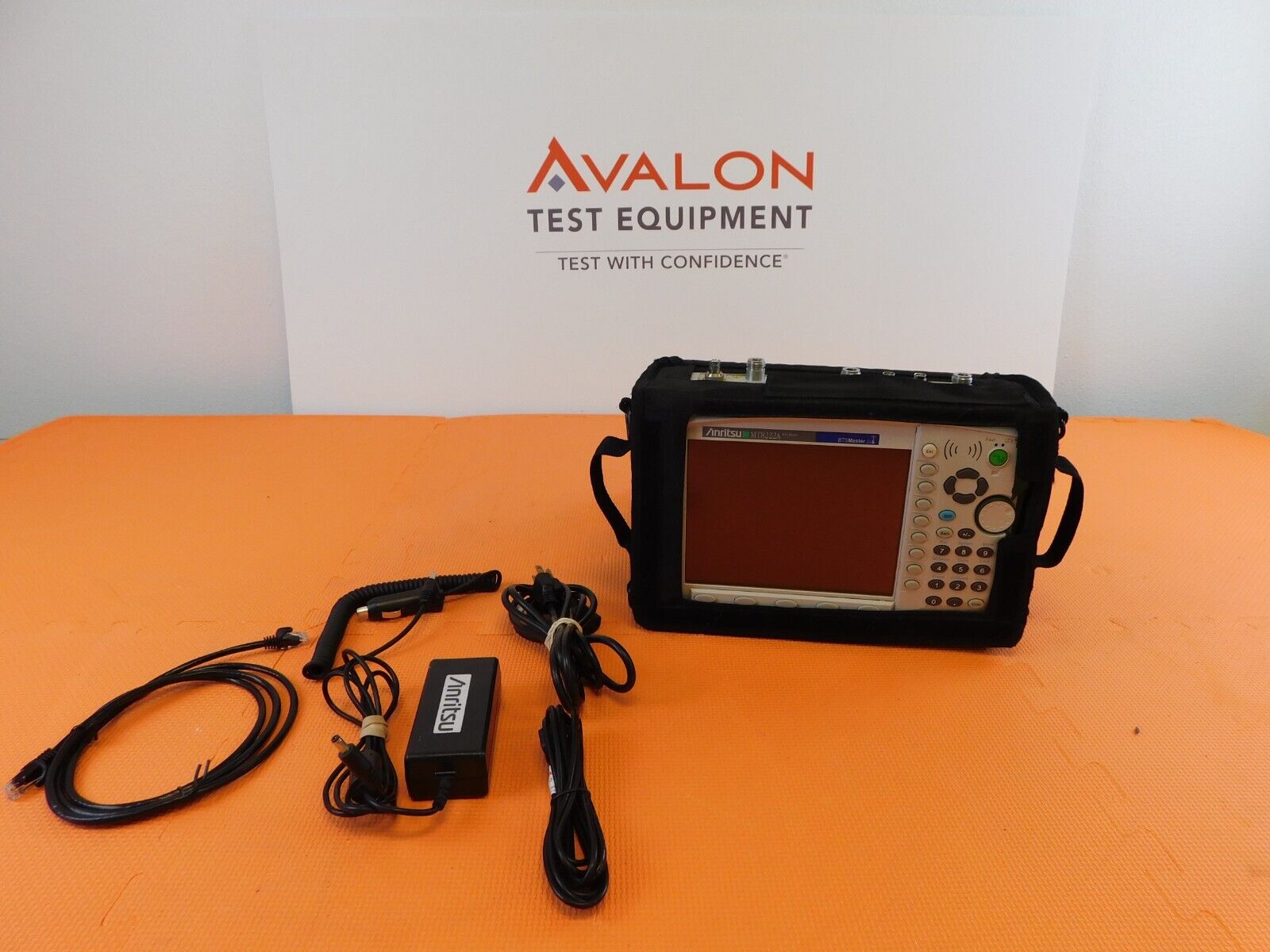To use a spectrum analyzer, connect the device to the signal source and set the frequency range. A spectrum analyzer is an essential tool for analyzing the frequency spectrum of electrical, acoustic, or optical waveforms.
It helps in the measurement and display of signal amplitude in various frequency bands. Understanding how to use a spectrum analyzer is crucial for professionals in the fields of telecommunications, audio engineering, and RF electronics. Whether for troubleshooting, research, or development purposes, utilizing a spectrum analyzer correctly allows for accurate analysis and interpretation of signal frequencies.
This article aims to provide a comprehensive guide on how to effectively use a spectrum analyzer to ensure precise measurements and meaningful insights.
Mastering Spectrum Analyzers For Beginners
Basic Functions And Purposes Of A Spectrum Analyzer
Spectrum analyzers are essential tools for analyzing and visualizing the frequency spectrum of an electrical, acoustic, or optical signal. They help engineers and technicians to identify, measure, and analyze various signal characteristics such as frequency, amplitude, and distortion. Understanding the basic functions and purposes of a spectrum analyzer is crucial for using it effectively. Here are some key functions and purposes:
- Detect and measure signal frequencies
- Analyze signal amplitude and power
- Identify signal distortion and harmonics
- Monitor the spectral characteristics of signals
Understanding The Interface And Main Controls
When using a spectrum analyzer, understanding the interface and main controls is paramount to harness its full potential. Familiarizing yourself with the following essential controls and elements will help you navigate the instrument with confidence:
- Frequency Span: Sets the frequency range to be displayed on the screen
- Amplitude Scale: Adjusts the vertical scale to view the amplitude of signals
- Center Frequency: Establishes the midpoint of the frequency span
- Resolution Bandwidth (RBW): Determines the frequency resolution for accurate signal analysis
- Trace and Marker Functions: Enables tracking and marking specific signal characteristics

Credit: www.siraudiotools.com
Setting Up Your Spectrum Analyzer
Setting up your spectrum analyzer is a crucial first step in effectively using this powerful tool for measuring and analyzing the frequency spectrum of RF signals. By following the proper setup procedures, you can ensure accurate readings and reliable performance from your spectrum analyzer.
Preparing The Environment For Accurate Readings
Before using your spectrum analyzer, it’s important to create an environment that minimizes potential interference and ensures reliable measurements. Here are a few key steps to prepare the environment for accurate readings:
- Choose a location with minimal RF interference to avoid distorting the signals being analyzed.
- Ensure proper grounding of the spectrum analyzer and any connected equipment to reduce the risk of unwanted noise and interference.
- Keep the area around the analyzer clear of other electronic devices and sources of electromagnetic interference.
Connecting The Device And Initial Calibration Steps
Once the environment is prepared, it’s time to connect the spectrum analyzer and perform initial calibration steps to ensure accurate measurements. Follow these steps to connect the device and perform initial calibration:
- Connect the spectrum analyzer to the power source and ensure all necessary cables and connectors are properly attached.
- Power on the spectrum analyzer and allow it to warm up for the recommended period to stabilize its internal components.
- Perform initial calibration procedures as instructed in the user manual, which may include setting reference levels, frequency spans, and resolution bandwidths.
- Verify that the analyzer is displaying accurate readings by comparing known input signals to the measured results.
Diving Into Spectrum Analysis Techniques
When it comes to utilizing a spectrum analyzer effectively, understanding the various analysis techniques is essential. Spectrum analysis includes identifying signal types and their characteristics, as well as isolating and examining frequency components. By mastering these techniques, you can gain actionable insights from the spectral data, allowing you to make informed decisions and optimizations.
Identifying Signal Types And Their Characteristics
Before diving into spectrum analysis, it’s crucial to be able to identify different signal types and understand their unique characteristics. Whether it’s a sinusoidal, random, or transient signal, each type presents distinct patterns and behaviors in the frequency domain. By analyzing these characteristics, you can gain a deeper understanding of the underlying signals, enabling you to make precise adjustments and optimizations.
Tips For Isolating And Examining Frequency Components
Isolating and examining frequency components is a fundamental aspect of spectrum analysis. Utilizing techniques such as windowing and averaging can help in effectively isolating specific frequency components within the spectral data. Understanding the distribution and magnitude of these components empowers you to address interference, identify modulation characteristics, and detect potential anomalies within the signals. By harnessing these tips, you can extract invaluable insights from the spectrum, leading to improved performance and signal quality.
How To Use A Spectrum Analyzer: Practical Tips
In this section, we will discuss practical tips on how to effectively use a spectrum analyzer. Understanding the proper techniques to optimize resolution bandwidth and effectively use the sweep function is crucial to obtaining accurate and clear results. Let’s delve into these practical tips that will enhance your spectrum analysis experience.
Optimizing Resolution Bandwidth For Clearer Results
When using a spectrum analyzer, optimizing the resolution bandwidth is essential for obtaining clearer and more precise results. The resolution bandwidth setting determines the ability of the analyzer to separate closely spaced signals. In general, wider resolution bandwidths are suitable for faster measurements of broad signals, whereas narrower resolution bandwidths are ideal for detecting weaker signals and analyzing closely spaced frequencies.
By adjusting the resolution bandwidth to an appropriate level, you can ensure that the spectrum analyzer effectively captures the details of the signal without overwhelming the display with unnecessary noise. It’s important to strike the right balance between capturing fine signal details and avoiding excessive noise, as this will lead to clearer and more accurate results.
Effectively Using The Sweep Function
The sweep function of a spectrum analyzer is a vital tool that allows for the visualization of signal amplitude over a specific frequency range. To effectively use the sweep function, it’s important to understand the different sweep modes available, such as single sweep, continuous sweep, and peak hold. Each mode serves a specific purpose and can be utilized based on the requirements of the analysis.
- Single Sweep: This mode captures the spectrum once and holds the display until the next sweep is initiated. It is useful for capturing transient signals or performing a one-time measurement.
- Continuous Sweep: This mode continuously updates the display with new spectrum data. It is suitable for monitoring ongoing changes in the signal or analyzing dynamic frequency components.
- Peak Hold: The peak hold mode retains the highest peak values encountered during the sweep. It is valuable for identifying intermittent or sporadic signal peaks that may go unnoticed in real-time sweeps.
By understanding the nuances of each sweep mode and selecting the appropriate one for the analysis at hand, you can effectively utilize the sweep function to gain valuable insights into the spectral characteristics of the signals under investigation.
Implementing these practical tips will greatly enhance your ability to use a spectrum analyzer, enabling you to achieve clearer and more accurate results for your frequency analysis needs.
Advanced Spectrum Analyzer Operations
Utilizing Marker Functions For Precise Measurements
When using a spectrum analyzer for advanced operations, utilizing marker functions can provide precise measurements. Markers allow you to select specific frequencies, amplitudes, and bandwidths for detailed analysis. By using the marker functions effectively, you can accurately measure and locate peak signals, harmonic distortion, or spurious emissions within the spectrum. This ensures that your analysis is precise and thorough.
Mastering Trace Modes For Detailed Signal Analysis
In advanced spectrum analyzer operations, mastering trace modes is crucial for detailed signal analysis. Different trace modes such as Max Hold, Average, and Negative Peak provide valuable insights into signal behavior over time. By understanding these trace modes and knowing when to apply each one, you can gain a deeper understanding of the characteristics of the signals under scrutiny. This enables you to identify transient events, monitor signal stability, and detect intermittent interference more effectively.
Troubleshooting Common Spectrum Analyzer Issues
When it comes to using a spectrum analyzer, it’s essential to be aware of the common issues that can arise and how to address them effectively. By understanding how to troubleshoot these problems, you can ensure accurate and reliable results when analyzing signals. Below, we’ll cover some of the typical setup mistakes and challenges associated with handling signal noise using a spectrum analyzer.
Identifying And Resolving Typical Setup Mistakes
Proper setup is crucial to obtaining accurate measurements with a spectrum analyzer. Here are some common setup mistakes that can impact the performance of the analyzer:
- Incorrect input settings: Make sure that the input frequency range and attenuation settings are correctly configured for your specific measurement requirements.
- Improper cabling: Check for any faulty or damaged cables and ensure that connectors are securely attached to the correct ports.
- Incorrect reference level: Adjust the reference level to accommodate the expected signal amplitude without causing clipping or overloading the input.
Handling Signal Noise And Other Common Challenges
Signal noise can significantly affect the accuracy of spectrum analyzer readings. Here are some strategies for managing signal noise and addressing other common challenges:
- Proper grounding: Ensure that the spectrum analyzer and all connected equipment are properly grounded to minimize interference from external sources.
- Filtering techniques: Implement appropriate filtering techniques to minimize the impact of unwanted signals, such as using band-pass or notch filters.
- Calibration checks: Regularly perform calibration checks to verify the accuracy of the spectrum analyzer measurements and identify any potential drift or inaccuracies.
Frequently Asked Questions Of How To Use A Spectrum Analyzer
What Is A Spectrum Analyzer Used For?
A spectrum analyzer is used to measure the magnitude of an input signal versus frequency. It helps in detecting and analyzing electronic interference, identifying signal irregularities, and monitoring changes in signal frequency. This tool is essential for troubleshooting and optimizing wireless communication systems.
How Does A Spectrum Analyzer Work?
A spectrum analyzer works by taking in an electrical input signal, converting it to an equivalent RF signal, and then displaying the amplitude of each frequency component in the signal. This creates a visual representation of the signal’s frequency content, allowing for analysis and troubleshooting.
Why Is Calibration Important For A Spectrum Analyzer?
Calibration is important for ensuring the accuracy and reliability of a spectrum analyzer’s measurements. It involves adjusting the instrument to a known standard, thus establishing a baseline for accurate measurements. Regular calibration helps maintain the integrity of the device and ensures precise analysis of frequency components.
What Are The Key Features To Look For In A Spectrum Analyzer?
When choosing a spectrum analyzer, consider factors such as frequency range, resolution bandwidth, dynamic range, and input sensitivity. It’s also important to assess the display and user interface for ease of use. Understanding these features will help in selecting a spectrum analyzer that best suits your specific measurement needs.
Conclusion
A spectrum analyzer is a versatile tool for analyzing and visualizing frequency data. By understanding its functions and features, you can effectively troubleshoot and optimize various electronic systems. Whether you’re in the field of engineering, telecommunications, or audio production, mastering the use of a spectrum analyzer can greatly enhance your work performance.

